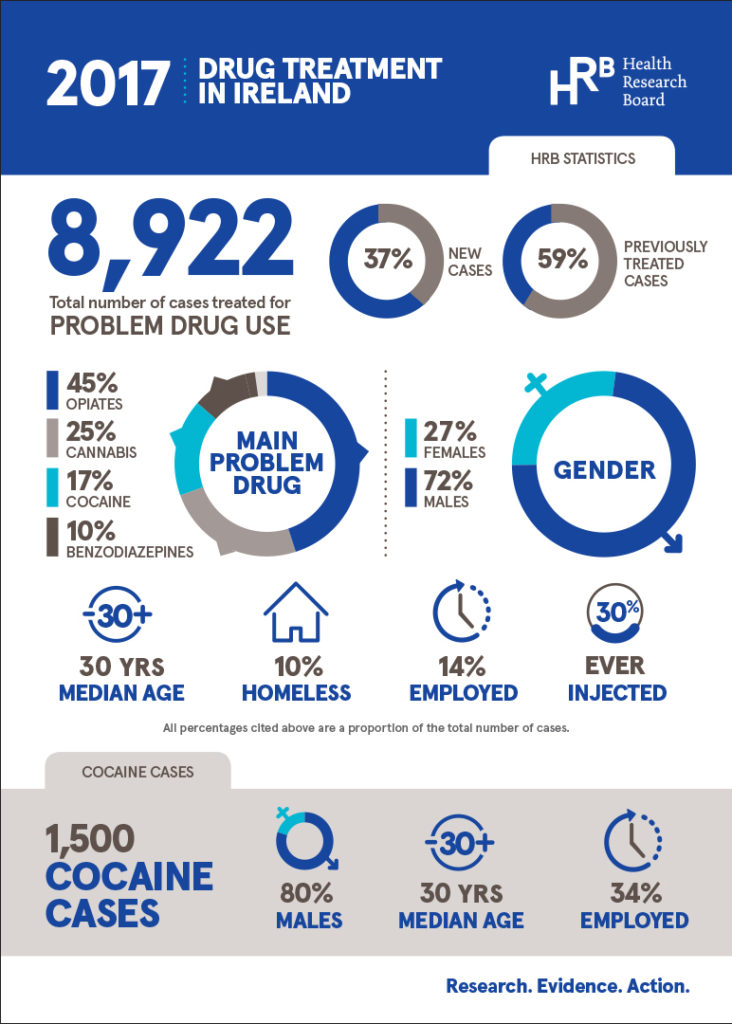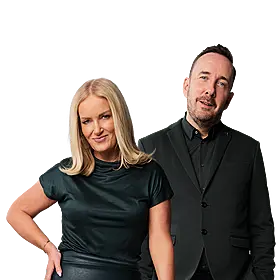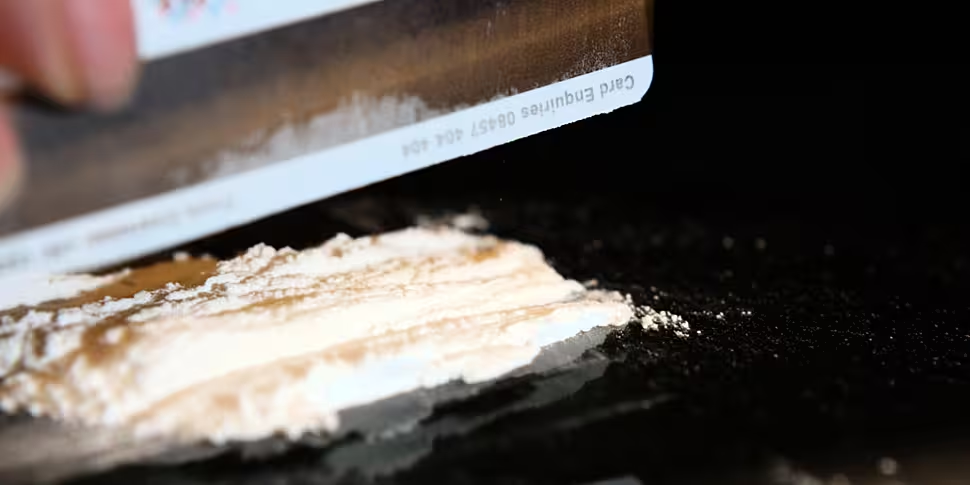New figures from the Health Research Board (HRB) have shown a 32% increase in the number of cocaine cases between 2016 and 2017.
In total, 63,303 cases presented for treatment for problem drug use between 2011 and 2017.
The number of treated cases increased from 8,361 in 2011 to 9,892 in 2015 - and then decreased to 8,922 in 2017.
In 2017, opiates - mainly heroin - remained the most common drugs reported among cases.
Cannabis, cocaine and benzodiazepines were the second, third and fourth most common drugs reported by cases in treatment.
In 2017, 8,922 cases were treated for problem drug use.
New cases accounted for 37% of all cases treated in 2017, as compared to 40% of all cases in 2011.
Cocaine cases
A total of 1,500 cases were treated for cocaine use in 2017 - almost double the number of cases in 2011.
The number of new cases treated rose from 396 in 2011 to 748 in 2017, and the median age for cases treated increased from 28 in 2011 to 30 in 2018.
Men accounted for four in every five cases (80%) over the reporting period.
The proportion of cases in paid employment increased from 20% in 2011 to 34% in 2017.
Over the period, the majority of cases (61%) reported polydrug use - problem use of more than one drug.
The number of cases reporting polydrug decreased from 5,514 in 2011 (66% of cases) to 5,106 (57% of cases), but fluctuated in the intervening period.
 Source: Health Research Board
Source: Health Research BoardAlcohol (1,914 cases), benzodiazepines (1,846 cases), and cannabis (1,690 cases) were the most commonly reported additional drugs in 2017.
Darrin Morrissey is chief executive at the HRB: "Problem drug use continues to seriously impact people throughout Irish society.
"This is evident in the drug treatment data presented today, as well as the HRB's recent drug-related deaths and alcohol treatment reports.
"Over the recent period of economic recovery, drug treatment trends are changing and the data we analyse from the HRB information systems helps to inform health services provision and the health policy responses to problem drug use in Ireland".
Dr Suzi Lyons is a senior researcher at the HRB.
She said: "There has been a notable increase in cases presenting with cocaine as their main problem drug since 2013, with a marked rise in the most recent figures from 1,138 cases in 2016, to 1,500 cases in 2017.
"Cannabis remains the most common drug among cases entering treatment for the first time.
"Four in every 10 new cases were treated for problem cannabis use, many at a young age - the median age for new cannabis cases was 21 years, compared to 32 years for opiates and 28 years for cocaine".









